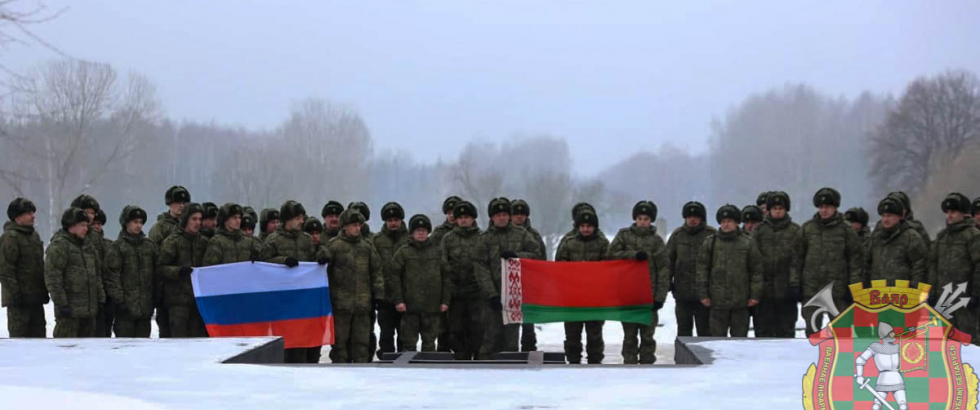An item on the Kremlin price list
 The situation got worse
The situation got worse

On Tuesday, February 1st, the first stage of the “Allied Resolve – 2022” exercises commenced and will continue until February 9th. Personnel and equipment will be relocated to Belarus from Russia and task forces created to defend a number of strategically significant facilities. During the second stage of the exercises (February 10th-20th), the repulsion of external aggression on the southern and western borders of Belarus will be rehearsed.
According to analysts, the transfer of 30,000 troops to Belarus is the largest manoeuvre in the region for over 30 years. Analyst Brian Whitmore believes this change in the geopolitical status of Belarus is one of the most significant developments in Eastern Europe over the past 8 years.
Lukashenka resisted Moscow’s attempts to create a base in Belarus for many years. Following the Russian annexation of Crimea and the invasion of the Donbas in 2014, Minsk devoted a lot of effort to maintaining a neutral position in the Russian-Ukrainian conflict, even proposing its own peacekeeping contribution. Belarusian propaganda promoted the idea of Belarus as a “stabilising influence”, while Lukashenka constantly reiterated that he would not allow the use of Belarusian territory for acts against third countries. Maintaining neighbourly relations with Ukraine and normalising relations with the West (alongside Eastern “integration”) have been stable planks in the Belarusian foreign policy agenda.
Now the mantra of “independence”, “sovereignty” and “neutrality”, with which Lukashenka went to the elections are only a memory. Turning to the Kremlin for support in the wake of the political crisis, the Belarusian dictator quickly found himself dependent. This change in status is noted by Western experts interviewed by The Washington Post. “He [Lukashenka] has been put into a corner. Whatever Putin wants now, Lukashenka says, ‘Yes.’” said David Marples, a historian at the University of Alberta in Canada.
The Kremlin’s help is not free, and Lukashenka’s IOUs will not suffice. Turning Belarus into a Russian external military-strategic platform is one of the items on the Kremlin’s price list. In September 2020, Lukashenka proposed to condense the schedule of joint military exercises and agreed to a regular rotation of troops, which amounts to a permanent Russian military presence in Belarus. Subsequently, he contemplated the idea of turning Belarus into a base for Russian atomic weapons. Lukashenka also agreed to open a joint military training centre in Hrodna, on the country’s western borders.
Military-strategic dependence is not the only item on the Kremlin agenda. After the completion of the military exercises, the parties will predictably return to the discussion of issues of union building, involving institutional changes in the economy.
Subscribe to our newsletter




Situation in Belarus
Constitutional referendum: main consequences


 Video
Video
How to count the political prisoners: are the new criteria needed?


 Video
Video
Paternalism In Decline, Belarusian Euroscepticism, And The Influence Of Russia


 Video
Video












